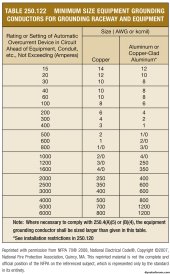ruralsolar
New Member
Not sure why I can't figure out the proper grounding for my system. I have two arrays, Sinclair Adjustable Ground mount with 3 posts per array. I was advised I can run a #6THHN from Array 1 to Array 2 where I have my disconnects to a grounding bar and then down to a grounding rod. The real question I have is, what combining do I need to do on the array itself? Do I need to "link" the 3 posts on each array along with a "link" to the purlins with all of that going to the grounding rod? If accurate, since I used the clamps for holding the panels to the purlins I do not need to ground each panel. Thoughts on what I'm missing?



